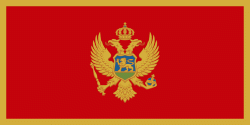Šavnik (Opština Šavnik)
Šavnik is a town in Montenegro and administrative center of the Šavnik Municipality. It is located at the confluence of three rivers - Bukovica, Bijela and Šavnik, at an altitude of 840 meters. It is the lowest lying settlement in the municipality.
Unlike most settlements in the area, which date back several centuries, Šavnik is relatively new, founded only in 1861. It was populated by migrants from other parts of Montenegro and Herzegovina, mostly craftsmen, merchants, riflers and blacksmiths, which were needed by local farmers. The area was overgrown with willows, which the newly formed town was named after (šavice – willow branches or seams, which were used as a roof covering).
Before the construction of first houses on the site of today's town, there were two mills on Šavnik River. The first three houses that were built in Šavnik were a tavern with a shop, rifle repair shop and a blacksmith shop. The town quickly became a center for the Drobnjaci region, and incorporated a post office, school, primary court, and military post.
Industrialization during the SFR Yugoslavia era mostly bypassed Šavnik, so did all major transit road or rail links, and economy of town went into stagnation. Population of Šavnik and entire municipality is since in slow but steady decline. Most of the residents are migrating to Nikšić and southern Montenegro, and Šavnik is often a synonym for a poor and deteriorating town. The new road Risan - Nikšić - Šavnik - Žabljak (P5), and proximity of Žabljak as a main mountain tourist resort in Montenegro may boost Šavnik's economic prospects.
Unlike most settlements in the area, which date back several centuries, Šavnik is relatively new, founded only in 1861. It was populated by migrants from other parts of Montenegro and Herzegovina, mostly craftsmen, merchants, riflers and blacksmiths, which were needed by local farmers. The area was overgrown with willows, which the newly formed town was named after (šavice – willow branches or seams, which were used as a roof covering).
Before the construction of first houses on the site of today's town, there were two mills on Šavnik River. The first three houses that were built in Šavnik were a tavern with a shop, rifle repair shop and a blacksmith shop. The town quickly became a center for the Drobnjaci region, and incorporated a post office, school, primary court, and military post.
Industrialization during the SFR Yugoslavia era mostly bypassed Šavnik, so did all major transit road or rail links, and economy of town went into stagnation. Population of Šavnik and entire municipality is since in slow but steady decline. Most of the residents are migrating to Nikšić and southern Montenegro, and Šavnik is often a synonym for a poor and deteriorating town. The new road Risan - Nikšić - Šavnik - Žabljak (P5), and proximity of Žabljak as a main mountain tourist resort in Montenegro may boost Šavnik's economic prospects.
Map - Šavnik (Opština Šavnik)
Map
Country - Montenegro
 |
 |
| Flag of Montenegro | |
During the Early Medieval period, three principalities were located on the territory of modern-day Montenegro: Duklja, roughly corresponding to the southern half; Travunia, the west; and Rascia proper, the north. The Principality of Zeta emerged in the 14th and 15th centuries. From the late 14th century to the late 18th century, large parts of southern Montenegro were ruled by the Venetian Republic and incorporated into Venetian Albania. The name Montenegro was first used to refer to the country in the late 15th century. After falling under Ottoman Empire rule, Montenegro gained its semi-autonomy in 1696 under the rule of the House of Petrović-Njegoš, first as a theocracy and later as a secular principality. Montenegro's independence was recognised by the Great Powers at the Congress of Berlin in 1878. In 1910, the country became a kingdom.
Currency / Language
| ISO | Currency | Symbol | Significant figures |
|---|---|---|---|
| EUR | Euro | € | 2 |
| ISO | Language |
|---|---|
| SQ | Albanian language |
| BS | Bosnian language |
| HR | Croatian language |
| HU | Hungarian language |
| SR | Serbian language |















